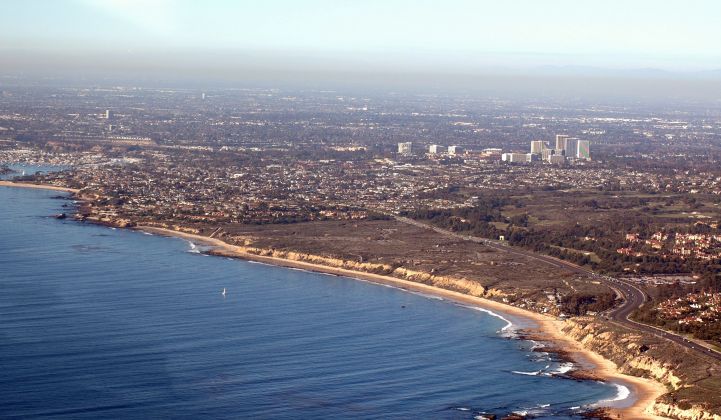California regulators have stepped in to rescue one of the state’s biggest utility pilot projects, aimed at bridging the gap between experimental and full-scale rollout of distributed energy resources as a grid resource.
On Thursday, the California Public Utilities Commission unanimously voted to approve an alternative decision on Southern California Edison’s 125-megawatt Preferred Resources Pilot, or PRP — one that will allow the long-delayed contracts to move forward, rather than be scrapped.
Thursday’s alternative decision, written by CPUC President Michael Picker, was largely seen as a welcome correction to a proposed decision in March that would have canceled the contracts on the grounds that they weren’t a cost-effective use of ratepayer funds.
But Picker wrote that the “cost of the contracts is justified by the magnitude of their collective expected contribution to local system reliability, existing CPUC programs, and larger state policy goals, such as grid modernization, distributed energy resources penetration, and greenhouse gas reductions.”
Picker also added that the decision “sends important signals to the investment community that California’s support for a clean energy transformation is unwavering” — a nod to the widespread concerns from the companies that first won these second-phase PRP contracts back in September 2016.
Winners of the 19 contracts in total include Advanced Microgrid Solutions with a 40-megawatt contract for demand response with energy conservation and batteries; Convergent with 35 megawatts of batteries; Hecate with 15 megawatts of batteries; NextEra with 10 megawatts of batteries and 10 megawatts of demand response; NRG with 10 megawatts of solar-plus-storage; and residential battery startup Swell with 5 megawatts of batteries.
As residential battery startup Swell wrote in comments with the CPUC, the proposed decision will “have a chilling effect on the DER market” in California.
“Having the Commission reject an entire portfolio of competitively bid and awarded projects more than two years after such proposals were submitted to SCE, and approximately one and a half years after SCE applied to the Commission for approval of the final contracts, will discourage and dissuade innovators and developers from continuing to invest in new solutions and business models,” it wrote.
"If adopted, this [decision] may have a chilling effect on the market, causing reliable developers to factor in a premium to cover the risk of Commission denial of preferred resources, driving up costs for customers.”
SCE’s PRP 2 contract is tied into a number of other important initiatives to address SCE’s need for more local generation resources for its Orange County and western Los Angeles regions. The closure of once-through cooling natural-gas plants to protect the state’s coastal waters, along with the unexpected closure of the San Onofre Nuclear Generating Station, add up to about 7,000 megawatts of generation capacity to be filled.
SCE’s first big DER procurement came as part of its local capacity requirement (LCR) procurement in 2014, with more than 250 megawatts of solar, batteries, demand response and energy efficiency, as well as more than a gigawatt of new natural-gas-fired power plants.
The PRP CPUC asked SCE to procure another 169.4 megawatts of preferred resources or energy storage to cover its LCR needs, giving it an opportunity to justify the cost of the contracts. Its first round of 100 megawatts' worth of PRP contracts was approved in 2015, with unanimous approval from the CPUC’s five commissioners.
This second 125-megawatt round of procurements is also meant to play an important part in pilot projects under the CPUC’s Distribution Resources Plan and Integrated Distributed Energy Resources proceedings. DRP and IDER represent California’s attempt to create values for the costs and benefits of DERs, and then to build them into the multibillion-dollar distribution grid investments made every year by SCE and its fellow investor-owned utilities, San Diego Gas & Electric and Pacific Gas & Electric.
The first real-world pilots for DRP, called its “Demo C” projects, are a mix of existing and new distributed energy installations. They’re meant to show if it’s possible to aggregate and control DERs en masse to reduce peak loads on local circuits, balance energy flows from rooftop solar, and carry out other similar grid management tasks. SCE has identified five separate PRP 2 projects that it plans to use as part of its DRP Demo C pilots.




